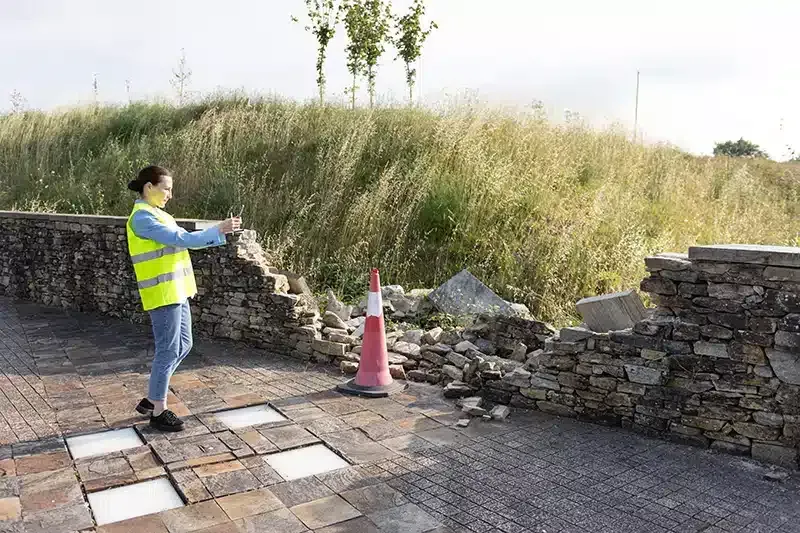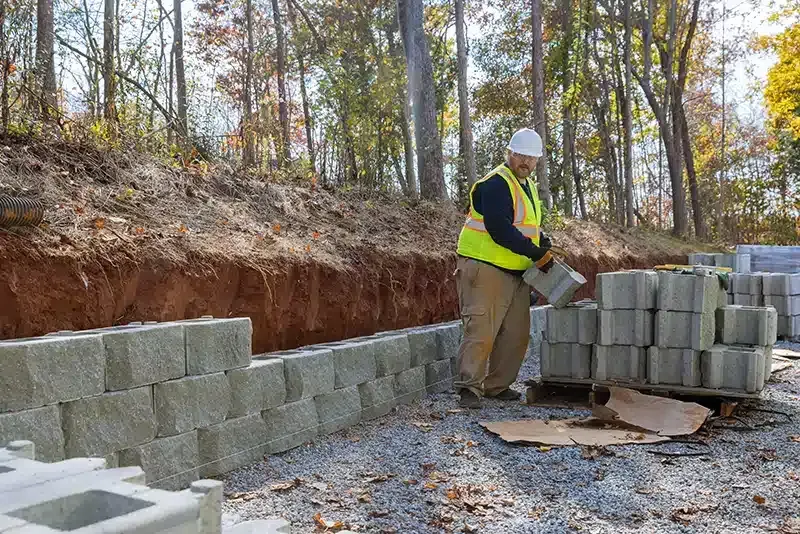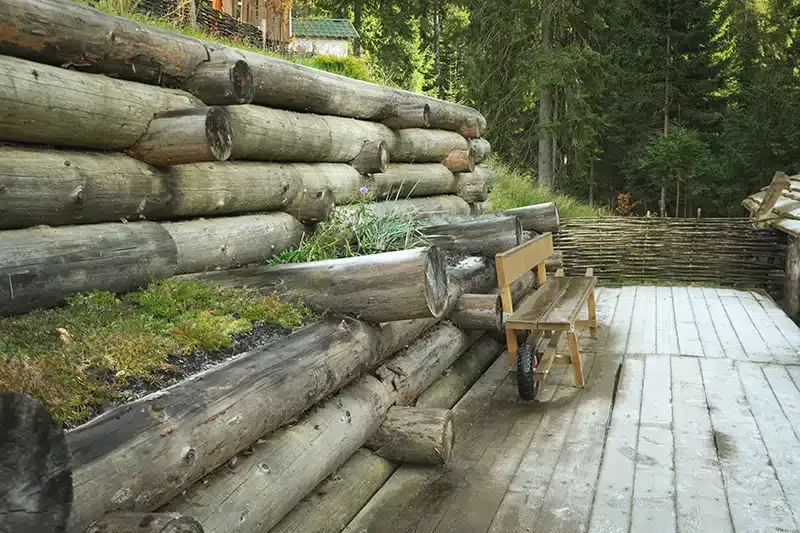What Makes Stone Retaining Walls a Sustainable Option for Your Yard?
When considering improvements to your yard, you might want to think about the sustainability of your choices.
Stone retaining walls stand out as a practical option, thanks to their use of locally sourced materials that minimize environmental impact.
They're not just about aesthetics; their design can also help with erosion control and water management, promoting a healthier ecosystem.
But what exactly makes them more sustainable compared to other materials?
Exploring the specifics can reveal some surprising benefits that could influence your landscaping decisions.
Natural Materials and Resources
When considering sustainable stone retaining walls, it's important to think about the natural materials and resources available to you. Locally sourced stones, like granite, limestone, or slate, offer an eco-friendly solution by reducing transportation emissions and blending beautifully with your landscape. These materials are not only durable but also provide a timeless, natural aesthetic.
Benefits of Locally Sourced and Reclaimed Stones
Using locally sourced stone helps lower your carbon footprint by reducing transportation costs and emissions.
- Reduced Emissions: Transporting materials over long distances adds to environmental pollution, so local stone options offer a greener solution.
- Character and History: Reclaimed stones can bring a unique charm to your project, while also reducing waste that would otherwise go to landfills.
Energy-Efficient and Eco-Friendly Materials
Choosing stones that require minimal processing is another way to make your retaining wall more sustainable.
- Less Resource Consumption: Natural stones typically require less energy to produce than manufactured alternatives.
- Sustainability: Opting for low-impact materials helps conserve resources and reduces your environmental footprint.
Enhancing Sustainability with Native Vegetation
Surrounding your stone retaining wall with native plants can further boost your landscape's sustainability.
- Support Local Ecosystem: Native plants thrive in your local climate and support wildlife, promoting biodiversity.
- Harmonious Landscape: Combining stone with native vegetation creates a balanced, thriving outdoor environment.
By carefully selecting your materials and integrating local plants, you can create a sustainable, beautiful retaining wall that not only enhances your landscape but also helps preserve the environment for future generations.
Erosion Control and Water Management
Effective erosion control and water management are essential for maintaining the longevity and stability of your stone retaining wall. Rainwater runoff can erode soil, undermining the structural integrity of the wall.
By incorporating a strategically designed stone retaining wall, you can effectively manage water flow and reduce the risk of erosion.
Redirecting Water with Stone
One of the major advantages of using stone for your retaining wall is its ability to redirect water.
- Channeling Runoff: When placed correctly, a stone wall can divert rainwater away from vulnerable areas, preventing soil erosion.
- Natural Drainage: Certain types of stone are porous, allowing water to naturally flow through, preventing pooling and damage to the wall.
Enhancing Soil Stability with Plants
Integrating plants and vegetation around your retaining wall provides additional benefits.
- Soil Stabilization: Plant roots help anchor the soil, reducing the likelihood of erosion and adding beauty to your landscape.
- Aesthetic Appeal: In addition to their functional role, plants enhance the overall look of your yard.
Incorporating Drainage Solutions
Installing a drainage system behind your wall can further reduce water pressure and improve water management.
- Weep Holes: Adding weep holes to your wall allows water to escape, reducing pressure and preventing damage to the structure.
- Proactive Water Management: A well-designed drainage system keeps water flowing freely, ensuring your wall remains stable for years to come.
By addressing both erosion control and water management, you can ensure the long-term durability of your stone retaining wall, while also enhancing the functionality and beauty of your landscape.
Long-Term Durability and Maintenance
A well-constructed stone retaining wall offers exceptional long-term durability with minimal maintenance requirements. Unlike materials like wood or metal, natural stone is highly resistant to weathering, decay, and pests, ensuring your investment remains strong and functional over the years.
You won’t have to worry about issues like rotting wood or rusting meta—stone walls are built to endure for decades with little wear.
Minimal Maintenance Needs
When it comes to maintaining stone walls, the process is relatively hassle-free.
- Periodic Inspections: Regular checks help spot any potential issues, such as settling or minor cracks. However, these concerns are uncommon with proper installation.
- Simple Repairs: If any wear occurs, repairs are straightforward, typically requiring just the replacement of a few stones.
Natural Aesthetic Appeal
Stone walls effortlessly integrate with the natural landscape, eliminating the need for frequent upkeep.
- No Painting or Staining: You won’t need to worry about repainting or staining your stone wall to maintain its look.
- Easy Cleaning: A quick wash with a hose or pressure washer can keep your stone wall looking pristine. Adding plants can also soften the appearance while promoting sustainability.
Stone retaining walls offer not only timeless beauty but also a practical, low-maintenance solution for your landscaping needs. Their durability ensures they continue to serve both aesthetic and functional purposes with minimal effort on your part.
Stone retaining walls are an excellent choice for sustainable landscaping, combining durability, natural beauty, and minimal maintenance. By using locally sourced and reclaimed stones, these walls reduce environmental impact while providing effective erosion control and water management.
With their long-lasting durability and ability to blend seamlessly into the landscape, stone retaining walls not only enhance the aesthetic value of your yard but also contribute to a more sustainable and eco-friendly environment for years to come.


